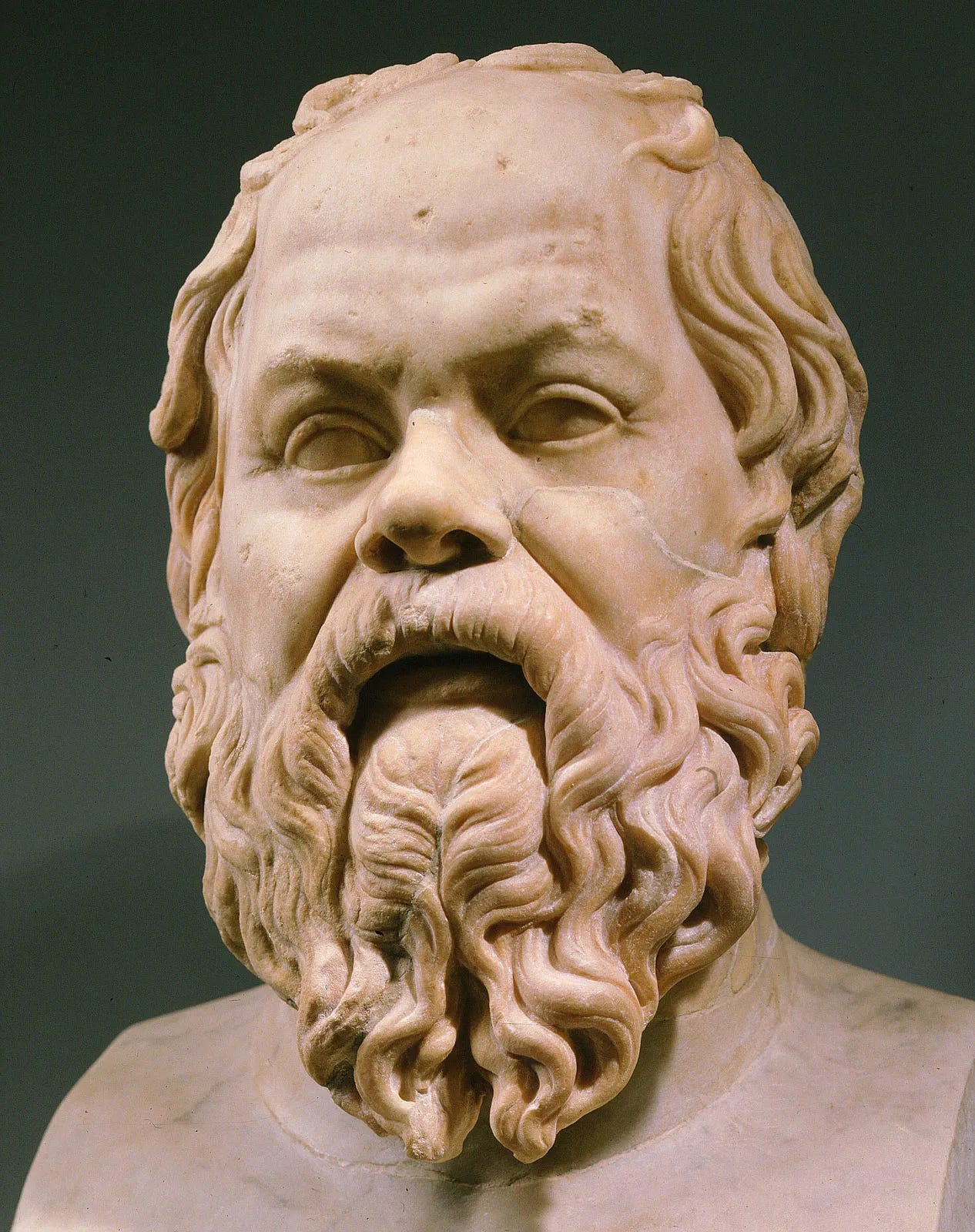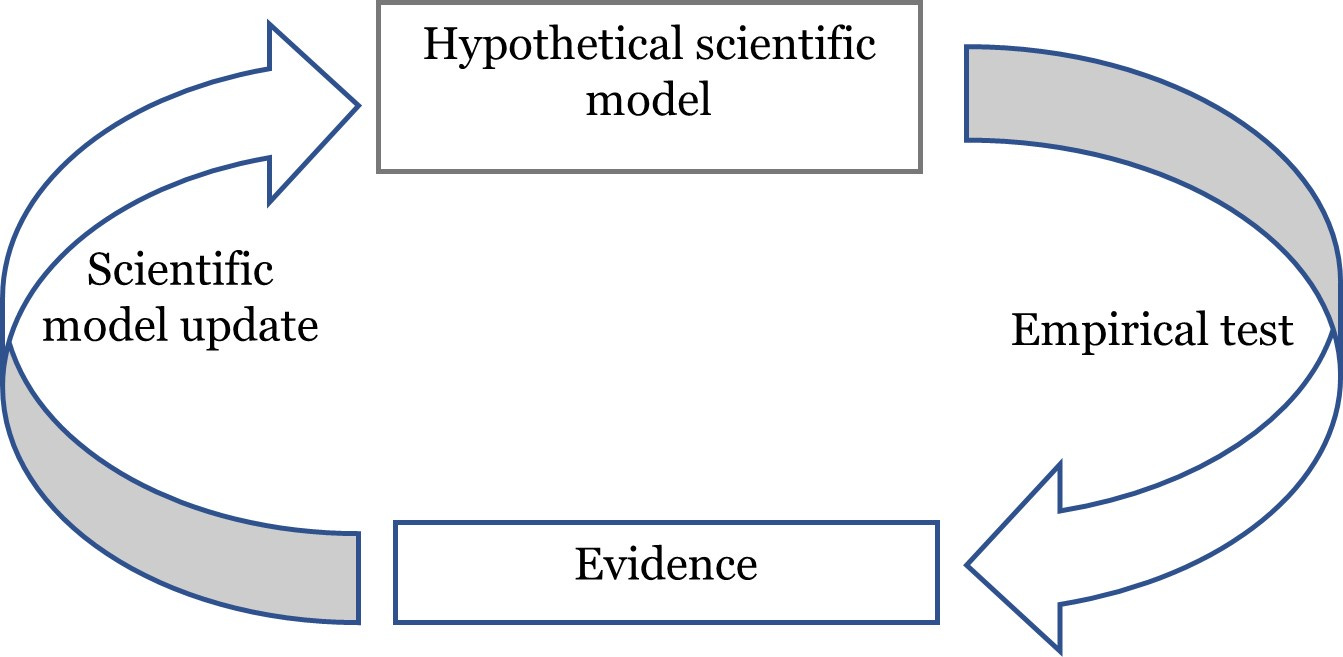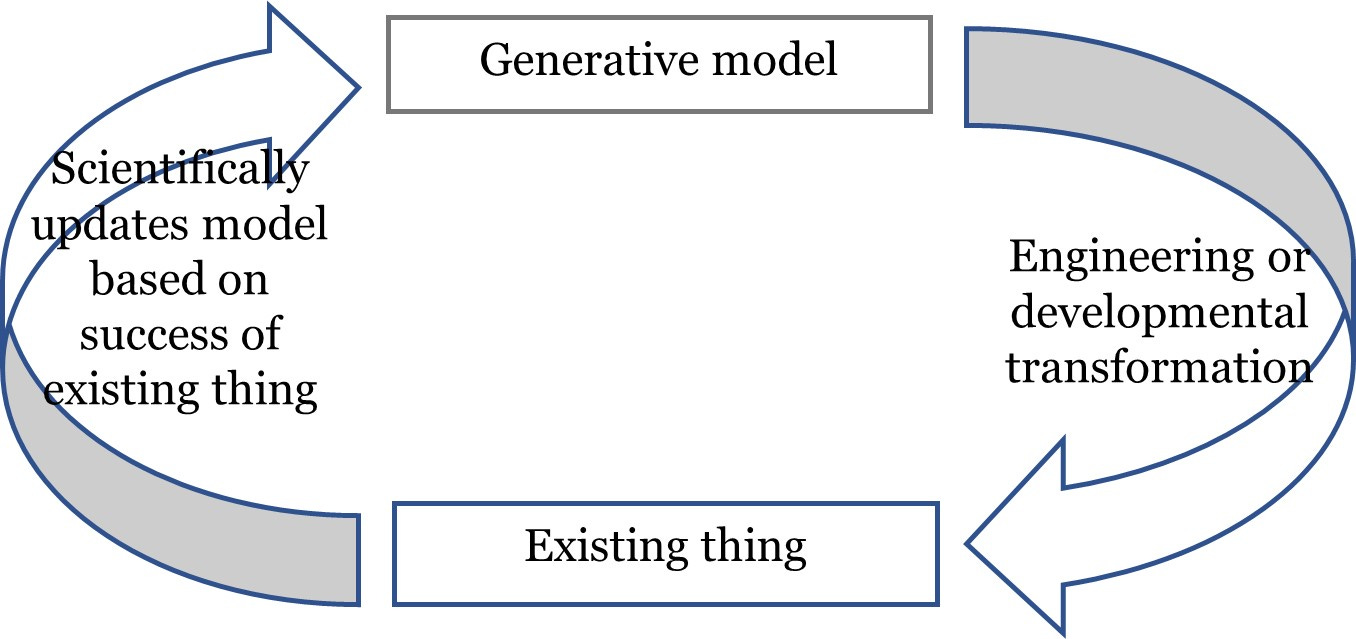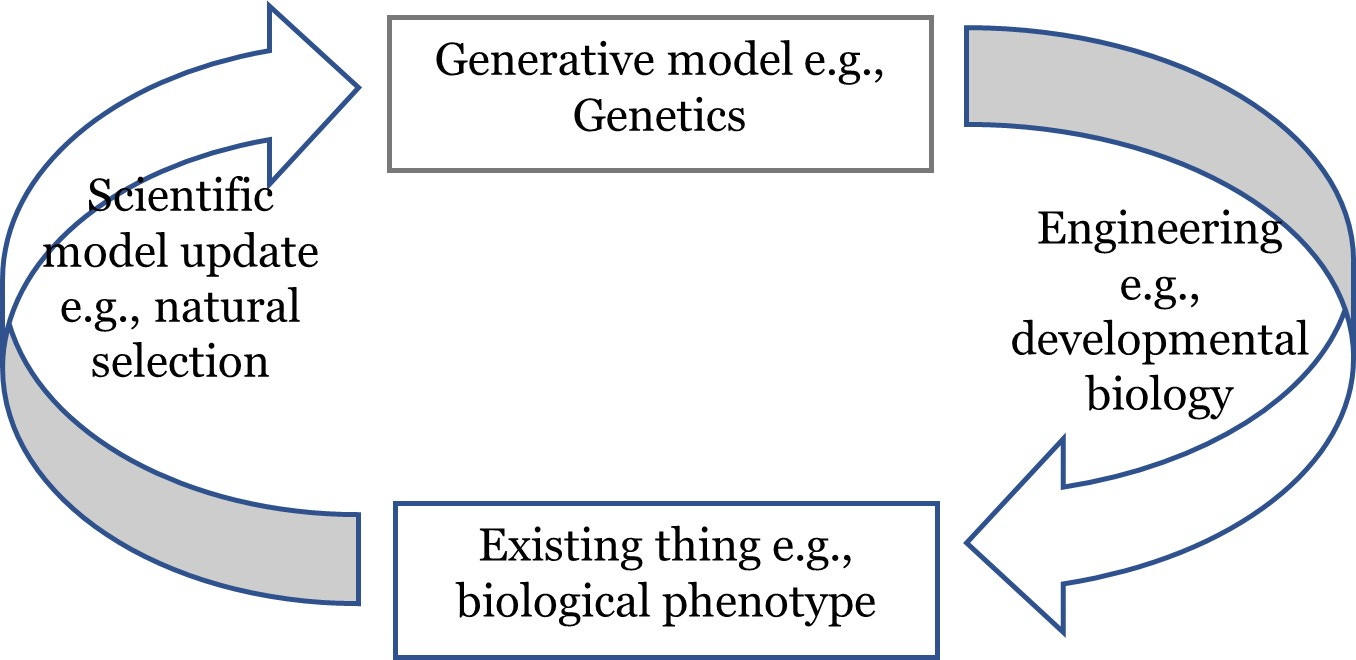Five paths to knowledge
Or is there only one?
There is only one good, knowledge, and one evil, ignorance.
Socrates
A broad scholarly consensus identifies five paths to human knowledge (1): authority, intuition, rationalism, empiricism, and the scientific method. We will examine each of these, using cutting edge tools, to suggest their synthesis within a single method. And we will conclude by suggesting an integration of these five separate methods into a single source of knowledge wherever it is found in nature.
Let’s start with authority, a vastly broad path spanning many different sources, from the proclamations of prophets revealing the word of God to scientific textbooks which summarize consensus scientific explanations. But this broad swathe of knowledge based on authority quickly collapses to greater simplicity once we realize that any authority, in turn, requires a source for their knowledge. In the case of the prophet, it is intuition and in the case of the textbook it is the scientific method. In every case knowledge from authority is derived (via rationalism) from one of the other four paths.
Let’s next consider intuition. Intuitive knowledge comes easily and quickly to our conscious mind – often rules of thumb that may or may not be useful in each situation. While intuition is the source of much human knowledge it draws upon more fundamental sources of knowledge such as genetic knowledge and learned neural knowledge. For example, intuitive strategies for dealing with danger, often described as fight or flight mechanisms, clearly have a genetic basis honed by natural selection providing propensities for learning more specific strategies. For instance, we might learn Karate or memorize evacuation routes in the event of a Tsunamis. Both will then form part of our intuitive knowledge for dealing with specific dangers. In general, we may consider intuitive knowledge as a form of genetic or learned knowledge that can be quickly and easily drawn upon when circumstances require.
The good news is that these sources of intuitive knowledge, natural selection, shaping our genetic knowledge, and learning, shaping our neural knowledge, are essentially the same process, they are described by the same mathematics, the mathematics of Bayesian inference (2; 3). And now I can let the cat out of the bag. The three remaining forms of knowledge (rationalism, empiricism, and the scientific method) are also implementations of this same essential method of knowledge accumulation – the path to knowledge may be a single path.
Next, we examine rationalism. Rationalism, as a method of acquiring knowledge may be described (1):
Rationalism involves using logic and reasoning to acquire new knowledge. Using this method premises are stated and logical rules are followed to arrive at sound conclusions.
But as the founder of Pragmatic Philosophy and one of the greatest logicians of all time, Charles Peirce noted over a hundred and forty years ago, logical processing is not limited to human thinking but is more generally the way the universe operates and evolves. As the Stanford Encyclopedia of Philosophy tells us (4):
He tended to consider a given state of the universe as being a given set of premisses, so to say, of a possible inference. Then a subsequent state of the universe could be seen as being the conclusion of an actual inference. Thus Peirce tended to see the universe of appearances as bringing itself into being by a process that is ultimately logical.
His insight is made clear by recent developments in quantum computation, the most powerful form of computation and thus applied logic ever envisioned where the computer programs are encoded using entangled quantum particles. Remarkably, as the Church–Turing–Deutsch principal states (5), the logic followed by these fundamental particles is sufficient to simulate any physical system to any degree of accuracy. In other words, rationalism is an inferential process or a human way of thinking that follows logic, but this same logical ability to perform inferences is a fundamental process residing at the most fundamental physical level and shared with the rest of the natural world.
Classical philosophers such as Socrates and Plato developed a great deal of knowledge based on authority, intuition and rationalism but did not discover the complete method of knowledge accumulation, called the scientific method, that would be achieved through the addition of empiricism. Empiricism is defined as (1):
Empiricism involves acquiring knowledge through observation and experience.
That knowledge depends on empiricism is widely understood and reflected in common sayings such as ‘seeing is believing’, but this notion is also a bedrock of western philosophy. For instance, Immanuel Kant described empiricism as the source of all knowledge (6):
That all our knowledge begins with experience there can be no doubt. For how is it possible that the faculty of cognition should be awakened into exercise otherwise than by means of objects which affect our senses
As Kant notes, empirical knowledge comes to us through our senses and their processing centers within our brains. We inherit these abilities from our animal ancestors which began their evolution over 500 million years ago. Accurate information about the outside world is of existential importance to all life with animals relying most heavily on their senses for this information. As the philosopher Daniel Dennet notes (7):
Getting it right, not making mistakes, has been of paramount importance to every living thing on this planet for more than three billion years, and so these organisms have evolved thousands of different ways of finding out about the world they live in
And so, natural selection has honed sensory abilities to provide highly accurate information and animal dedicate large sections of their brains to processing this information, performing inferences upon it, and basing their actions upon those inferences.
Again, we see that the empirical way of knowing is not limited to human but is widespread among life forms. The Free Energy Principle takes this further (8) and defines existing things as requiring a boundary between the inside (the thing) and the outside (the external world). This is a statistical separation where the effects of the outside world are mediated by sensory states forming the boundary and the effects of the thing on the outside world is mediated by action states also forming the boundary.
This understanding sheds new light on empiricism, revealing it as a universal method of obtaining information or evidence about the outside world. The evidence is processed by internal states to inform actions that the thing may take in the external world, actions designed to improve the likelihood of its continued existence.
This brings us to the scientific method, the final method for acquiring knowledge and as we see from its definition, it is an amalgamation of all the other methods (1):
The scientific method is a process of systematically collecting and evaluating evidence to test ideas and answer questions. While scientists may use intuition, authority, rationalism, and empiricism to generate new ideas they don’t stop there. Scientists go a step further by using systematic empiricism to make careful observations under various controlled conditions in order to test their ideas and they use rationalism to arrive at valid conclusions.
Unpacking this a little, we see that the scientific method uses the full set of knowledge sources to form, test, and draw conclusions about the validity of new ideas – but it does this in an extremely powerful way. Our ability to construct and rationally examine imaginative hypotheses in our mind, perhaps a combination of intuition and rationalism, has its physiological basis in areas of the brain which have only recently evolved, and which are most highly developed in humans. This is a potent cognitive device as it allows us to form hypotheses far beyond what our senses can detect, we can for instance imagine life on other planets. But this creative imaginative process very often gets it wrong. As a cognitive ability it is a new kid on the block, able to suggest creative hypothesis but ones highly prone to errors.
Fortunately, we also have access to another cognitive ability, one that as we discussed in the section on empiricism has been honed to accuracy over hundreds of millions of years, our empirical senses. When imaginative hypotheses are subject to the selective abilities of empirical sensory information and their giddy conjectures are brought to their senses, a synergy is formed accumulating a new form of knowledge, scientific knowledge. This process is cyclical and evolutionary.
Each cycle may be envisioned as beginning with a hypothetical scientific model, usually based on an existing model already supported by evidence but with a new twist, a slightly varied set of possible hypotheses produced by an imaginative combination of intuition and rationalism.
Figure 1: The accumulation of scientific knowledge within scientific models.
The model’s implications are inferred through the rational process of deduction revealing the observable consequences of the various hypotheses. Then empirical tests or experiments are designed that will produce evidence of the hypothetically predicted outcomes. Evidence produced by the experiment updates the model by supporting some of the hypotheses more and others less. This part of the inferential process called induction has a precise mathematical form named the Bayesian update where the probability assigned to each hypotheses forming the model are adjusted according to whether the new evidence supports that hypothesis or not. If some hypotheses are ruled out by the evidence their probability drops to zero and they may be deleted from the model. With this update in hand, the model may be further modified with some new twists, perhaps splitting one hypothesis into two predicting slightly different observations, and the process repeated.
Each of the five paths to knowledge are included in this single process. Each cycle begins with the existing or prior model, composed of a logically complete set of hypotheses each assigned a probability derived from scrutiny by prior evidence and perhaps slightly varied using a combination of intuition and rationalism. We might think of the knowledge of this prior model as knowledge from authority as it represents the current state of authorized knowledge. This prior model is subjected to empiricism by conducting experiments producing new evidence which updates the prior model to what is called the posterior model by adjusting the probabilities assigned to each hypothesis, bringing them into consistency with all the evidence. And so all five paths to knowledge participate within the scientific method.
Importantly, although this process is cyclical the model at the end of the cycle is not the same as the one at the beginning; knowledge is increased. Each cycle begins with the existing or prior model but ends with the updated posterior model. The model evolves cycle after cycle; it accumulates knowledge and gains predictive accuracy.
In some way this single path to human knowledge is just what we intuitively expect. For one thing to know another thing requires two essentials: having a model or a conception of the other thing and some supporting evidence indicating the conception’s accuracy. When these two essentials join in a cyclical process of model testing and updating, knowledge is accumulated.
We might assume that knowledge, particularly scientific knowledge, is largely knowledge for knowledge’s sake rather than existential knowledge, or knowledge on which existence depends. But this is belied by the fact that the majority of our 8 billion people wouldn’t exist in the absence of scientific knowledge.
An examination of general existential knowledge requires a slight adaptation of our model. First an existential model is called a generative model or a model that autopoietically generates some existing thing. Autopoietic means self-creating and self-maintaining, and the generative model transforms into a thing using engineering knowledge contained within the autopoietic model. In the final step of this cycle, the degree of success enjoyed by this generative model in producing existing things is used, in a scientific manner, as evidence to update the generative model.
Figure 2: Accumulation of existential knowledge within generative models
In a cultural context we can see that this depiction of knowledge accumulation works quite well. From the development of bridges to software to moon rockets we see that this interplay between scientific and engineering methods works quite well to describe the existence of many cultural structures in the modern world. And we can see the roots of this process in prescientific knowledge, for example in early agricultural, where traditional knowledge concerning ground preparation, planting, growing and harvesting produced crops and the successes and failures of these processes gradually updated traditional knowledge.
In this manner we can encompass much of cultural evolution within a model of existential knowledge. The metaphors of engineer and scientist may rankle as these are very recent manifestations of ancient paths of knowledge accumulation, but we will argue that these labels are fitting from the perspective that human science and engineering are but a recent rediscovery of ancient natural methods of knowledge accumulation (See post: The Good Engineer and the Good Scientists at the Foundations of Existence).
Figure 3: Accumulation of biological knowledge within the genetic model
For example, this paradigm easily applies to biological evolution and the accumulation of biological knowledge. Here the generative model is the (epi) genetic model and the engineering transformation of this model into a biological phenotype is described by the field of developmental biology. And finally, the genetic model is updated using the success of phenotypes as described by natural selection.
We suggest that this process of knowledge accumulation accounts not only for cultural and biological knowledge but more universally for the accumulation of knowledge wherever it is found in nature from quantum wave functions to cultural knowledge (9). And so, we see that the scientific method not only integrates all paths to human knowledge but may serve as a metaphor for all forms of natural knowledge.
References
1. Jhangiani, Rajiv S., et al. Research Methods in Psychology. 4th edition. s.l. : Independently published (July 29, 2019), 2019.
2. Universal Darwinism as a process of Bayesian inference. Campbell, John O. s.l. : Front. Syst. Neurosci., 2016, System Neuroscience. doi: 10.3389/fnsys.2016.00049.
3. Gopnik, A. and Wellman, H. M. . Reconstructing constructivism: Causal models, Bayesian learning mechanisms and the theory theory. s.l. : Psychological Bulletin. (In Press), 2016.
4. Legg, Catherine and Hookway, Christopher. Pragmatism. [book auth.] Edward N. Zalta (ed.). The Stanford Encyclopedia of Philosophy (Summer 2021 Ediion),. s.l. : https://plato.stanford.edu/archives/sum2021/entries/pragmatism/, 2021.
5. Wikipedia. Church-Turing-Deutsch principle. Wikipedia. [Online] [Cited: February 23, 2021.] https://en.wikipedia.org/wiki/Church%E2%80%93Turing%E2%80%93Deutsch_principle.
6. Kant, Immanuel. Critique of pure reason (The Cambridge Edition of the Works of Immanuel Kant). s.l. : Translated and edited by Paul Guyer and Allen W. Wood. Cambridge University Press. , 1999. ISBN 978-0-5216-5729-7..
7. Dennett, Daniel C. Darwin's Dangerous Idea. New York : Touchstone Publishing, 1995.
8. Answering Schrodenger's question: A free-energy formulation. Ramstead, Maxwell James Desormeau, Badcock, Paul Benjamin and Friston, Karl. s.l. : Elsevier, Physics of Life Reviews, Vols. 24, pages 1-16. https://doi.org/10.1016/j.plrev.2017.09.001.
9. Campbell, John O. The Knowing Universe. s.l. : KDP, 2022.




